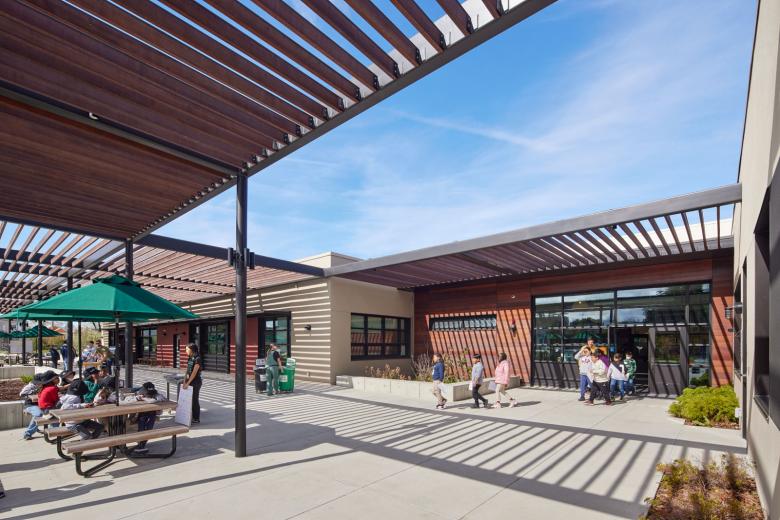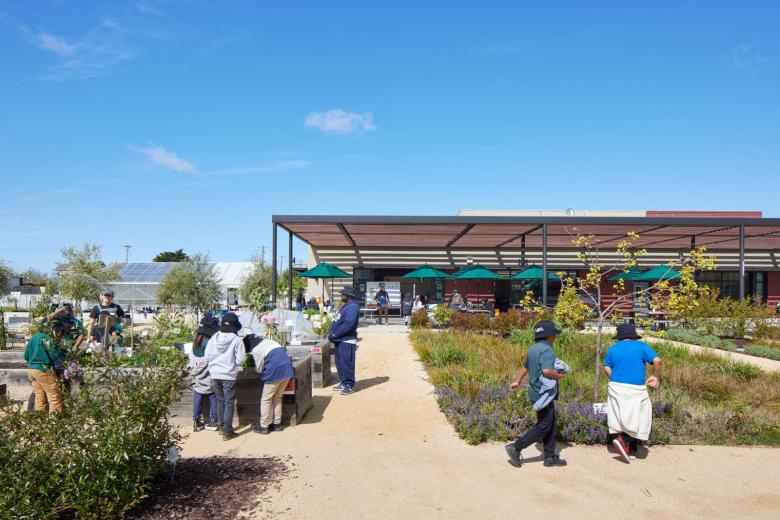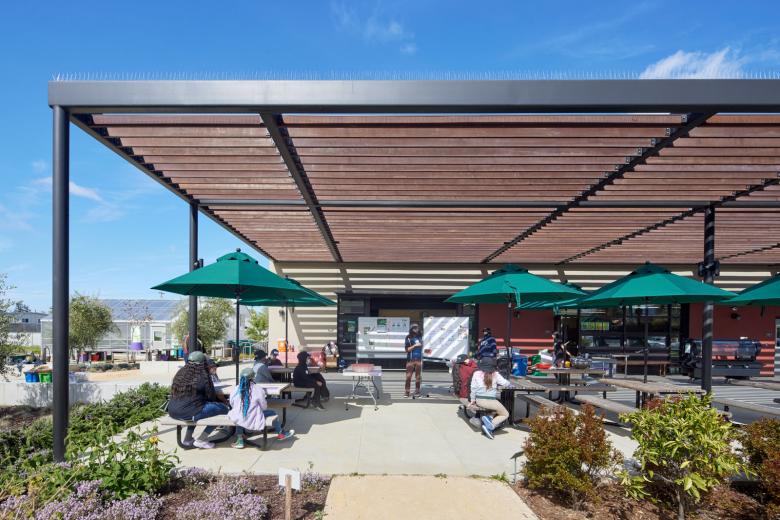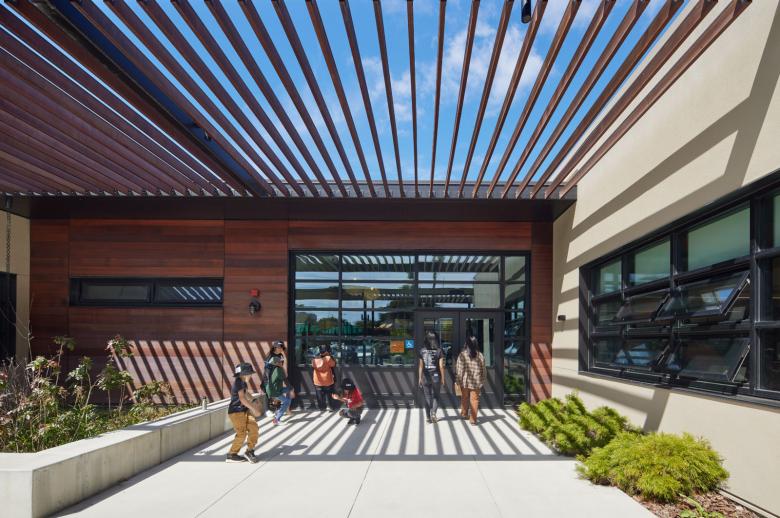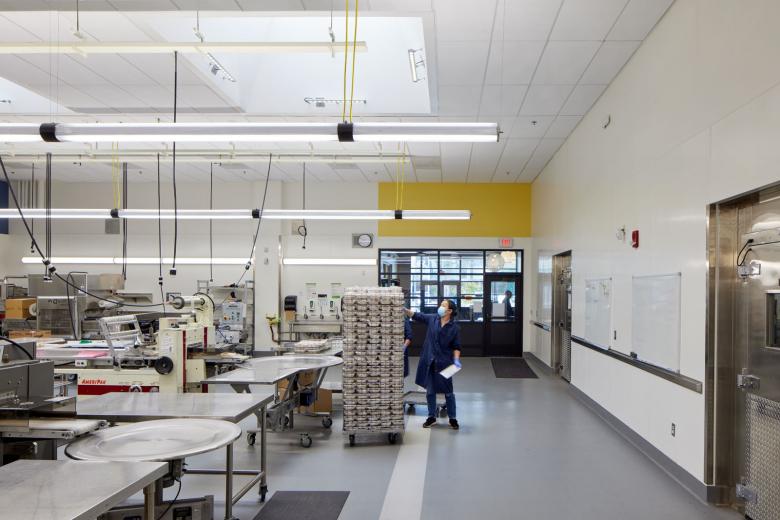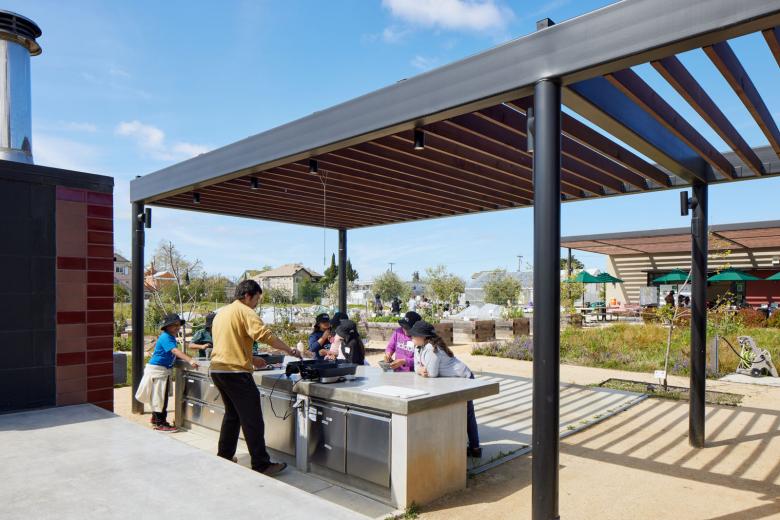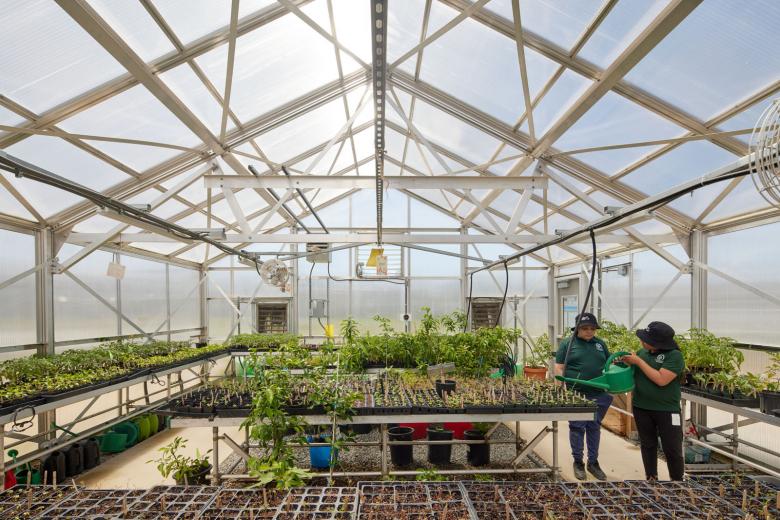US Building of the Week
The Center
CAW Architects
4. December 2023
Photo: Bruce Damonte
The Center is a combination Central Kitchen, Instructional Farm, and Education Center that supports daily food production for every student in the Oakland Unified School District in West Oakland, California. The design of The Center by Palo Alto's CAW Architects features shaded outdoor spaces, indoor/outdoor classrooms, a greenhouse, and other components that allow students to better understand where their food comes from. CAW Architects answered a few questions about the project.
Location: West Oakland, California, USA
Client: Oakland Unified School District
Architect: CAW Architects
- Design Principal: Brent McClure, AIA
Structural Engineer: SOHA Engineers Integral Group
MEP Engineer: Integral Group
Civil Engineer: BKF Engineers
Landscape Architect: Bay Tree Design, Inc.
Food Service Designer: Webb Design
Contractor: C. Overaa & Co., Tulum Innovative Engineering Inc, Eclipse Electric of CA
Construction Manager: Cumming Group
Photo: Bruce Damonte
What were the circumstances of receiving the commission for this project?The Oakland Unified School District led a competitive RFP response with multiple architects. Although a design competition was not part of the selection process, providing initial ideas and creativity was encouraged. CAW presented a series of concepts that explored ways to inter-connect the classroom and education functions directly with the central kitchen. By directly linking the traditionally closed-off institutional function of a central kitchen with a public and open classroom environment, the broader community is able to see firsthand how their food is prepared, and then the staff preparing the meals at a large scale are able to interact and understand whom they are preparing food for.
Photo: Bruce Damonte
Please provide an overview of the project.Located in the heart of West Oakland, The Center marries together a central kitchen, culinary arts education center, and an urban farm to support 34,000 students across nearly 77 schools for Oakland Unified School District. The one-of-a-kind project joins together district-wide food production, an education center focused on environment, food and garden programming, an instructional garden and soon-to-be farm on one comprehensive site to support health, wellness, and education for the entire school district. It is designed to provide nearly 30,000 fresh-cooked meals each day, to feed students and families throughout the District.
The design is organized around a large outdoor court, shaded under an expansive wood trellis.This space serves as the central hub, connecting the central kitchen, education classrooms, and instructional garden into a single, unified space serving students, food-service workers, educators, and the community. Through large glass roll-up doors, the classrooms flow directly onto the outdoor court and then into the instructional garden and greenhouse. The classrooms include a full-service demonstration and teaching kitchen, student education space, and a second flex lab classroom supporting programming. This education center serves early childhood to young adult programs for the entire Oakland community.
Photo: Bruce Damonte
The central kitchen is designed to maximize the use of locally sourced ingredients when possible, to create freshly prepared ingredients and meals. Ultimately the students will be able to experience the sights and smells of freshly created meals through bulk serving kitchens, as part of the District's broader food service plan.
Constructed in two phases, the first phase contains raised bed sections, a fully-equipped outdoor kitchen with pizza oven, two outdoor classrooms, a greenhouse, and garden work-areas. It acts as a field-trip destination for elementary middle and high school children where they can learn about the growing cycles and types of produce, then pick and prepare a meal. The future farm will offer science, health, wellness, urban agriculture, and career-based learning opportunities for high school students as well as adult education programs to support the broader community. The space's greenhouse produces all starter plants from seed to support school gardens across nearly 60 schools within the District. The District is currently planning the second phase to create an urban farm, community garden and nature play space with the undeveloped portion of the site.
Photo: Bruce Damonte
What are the main ideas and inspirations influencing the design of the building?The central theme of the project was creating an open and flexible experience for the students, school district, and surroudning community. Traditionally, central kitchens are closed silos. Our design explored ways to interconnect the central kitchen with the learning environments, the outdoor classroom spaces, and the urban farm. A large outdoor classroom area links the outdoor flexible environments to the classrooms and gives the overall project it's primary form.
Photo: Bruce Damonte
How did the project change between the initial design stage and the completion of the building?The building design was initially more expansive in scope, with a second story that included a small event center. However, the extremely tight budget constraints on the project limited the design to include only essential program space. One of the design challenges was maximizing the buidling's efficiency and organizing the program to avoid any hallways or circulation space. This resulted in the final concept where the primary circulation around the classrooms and kitchen are through the outdoor trellised patio/classroom area. This forms a creative and interactive space linking the farm, education center and kitchen.
Photo: Bruce Damonte
Was the project influenced by any trends in energy-conservation, construction, or design?CAW Architects designed several innovative solutions into the project to reduce energy consumption and enhance building performance. These include a C02-based closed-loop refrigerant system that is more efficient than traditional systems, and a heat-recovery loop to capture the waste heat produced by the refrigeration to help heat the building‘s domestic water. The building has 100% daylight autonomy in all major spaces while the outdoor trellis was designed to eliminate all glare in the classrooms. The project is topped with a solar-ready roof for future use, and in a future phase, enough panels will reduce energy impacts by 50% over typical, energy intensive central kitchens. These design features combined with the architecture and site planning create a new model for food, health and wellness that supports an entire region.
